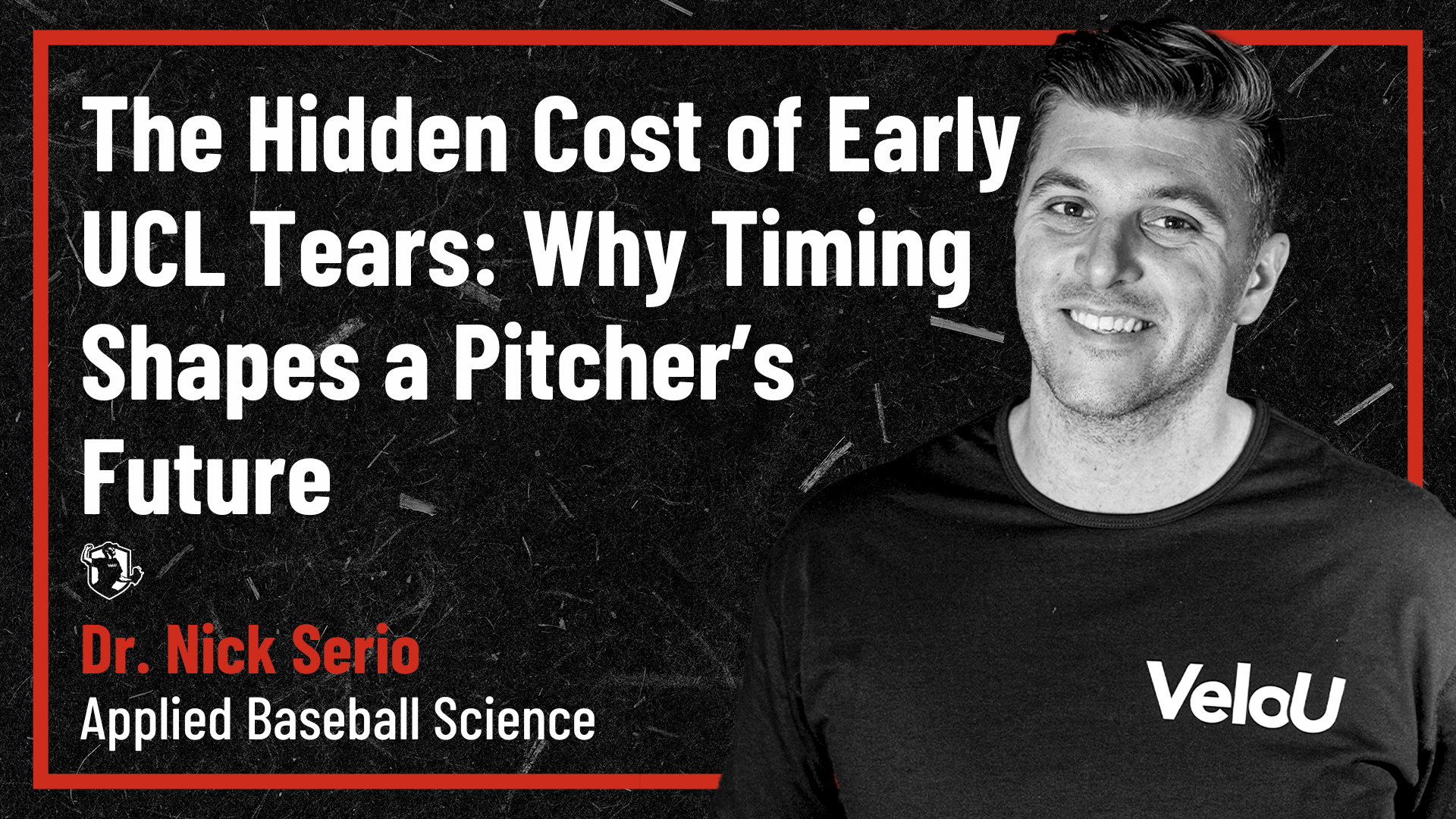

In today’s game, UCL reconstruction—Tommy John surgery—has become so normalized that it is often framed as a routine checkpoint on the road to Major League Baseball. Stories of pitchers returning to throw harder or last longer have helped feed a cultural myth: that the surgery is not only safe but perhaps even beneficial.
But data from Kriz et al. (2023) sharply contradict this narrative. By examining elite pitchers across multiple career stages, the researchers uncovered something that has been hiding in plain sight: the timing of a UCL tear is one of the strongest predictors of career success. Pitchers who tear and repair their UCL before 20 years old are far less likely to reach MLB and, if they do, have shorter professional careers. In contrast, pitchers who delay the injury until later in their careers are more than four times as likely to make it to MLB and play longer.
This isn’t just about one surgery. When placed alongside other landmark studies—DeFroda et al. (2016) on seasonal timing and workload, Manzi et al. (2021) on sudden velocity spikes, and Slowik et al. (2025) on body size and elbow torque—the picture becomes clearer: career arcs are not shaped by surgery alone but by the environments, decisions, and stressors that accelerate when that first tear occurs.
The question Kriz and colleagues sought to answer is deceptively simple: Does the timing of UCL reconstruction matter for professional success?
For decades, the narrative has been that surgery is a neutral reset button. Rehab, recover, return. But when injuries happen during critical developmental windows—such as late adolescence—does the disruption create permanent consequences?
To answer this, the researchers divided pitchers into early, mid, and late UCL-R groups and tracked MLB attainment, career longevity, and performance outcomes.
The conclusion is sobering: the earlier the injury, the steeper the decline in professional opportunity.
This retrospective study of MLB pitchers from 2007–2014 revealed two critical risk factors: UCL tears clustered early in the season and disproportionately impacted younger pitchers logging heavy workloads. Combined with Kriz’s findings, the message is clear—when high-intensity workloads arrive before the body is mature and resilient enough to absorb them, the timing of injury shifts earlier, cutting into long-term opportunity.
Another layer comes from Manzi’s work comparing intra- vs. inter-pitcher variability. Their data showed that sudden velocity gains—not absolute velocity alone—are most closely linked with elbow stress. This dovetails with Kriz: young pitchers chasing velocity spikes for showcase exposure often accelerate themselves directly into the injury window. It’s not that 95 mph is inherently dangerous—it’s how quickly you got there.
Finally, Slowik’s biomechanical analysis of 624 pitchers demonstrated that body size amplifies elbow stress. Each 2.25-pound increase in body weight raised varus torque by 1 N·m. For big-framed high schoolers who already carry higher torque loads, adding rapid velocity spikes only multiplies risk. Pair that with showcase culture, and you have the perfect recipe for early breakdown—and the exact early-career UCL tears Kriz documented.
When viewed together, these studies dismantle the myth that Tommy John is inevitable and neutral. Instead, they suggest:
The practical takeaway is unavoidable: long-term success in baseball depends less on how hard you throw at 17 and more on how long you can sustain velocity and health into your mid-20s.
At VeloU, this is why our philosophy emphasizes sustainable velocity. Our goal is not just helping athletes reach 90 mph—it’s keeping them healthy for the years after they do.
That means:
Every year we can delay an athlete’s entry into the UCL “danger zone” is another year of increased odds at MLB attainment.
Some might argue that earlier surgery could be better: younger pitchers have fewer accumulated miles and may recover faster. But Kriz’s data, supported by DeFroda, Manzi, and Slowik, contradicts this idea. Early surgeries don’t offer a reset—they rob pitchers of developmental runway.
The contrarian perspective worth entertaining is this: maybe the true problem isn’t the surgery but the industry pipeline that accelerates exposure and velocity before pitchers are ready. Early injuries may not be a personal failing—they may be systemic outcomes of showcase culture, recruiting pressures, and the glorification of short-term radar-gun numbers.
Taken together, these studies form a sobering but actionable truth: UCL surgery is not destiny, but timing is. Pitchers who delay injury are not just lucky—they are products of environments and training models that protect development windows.
As a performance community, we must reframe success. It isn’t throwing 95 mph at 17, it’s still throwing hard and healthy at 25. At VeloU, that is the mission: sustainable velocity, long careers, and rejecting the myth that surgery is inevitable and neutral.
In the race to MLB, the slower road is the faster one.